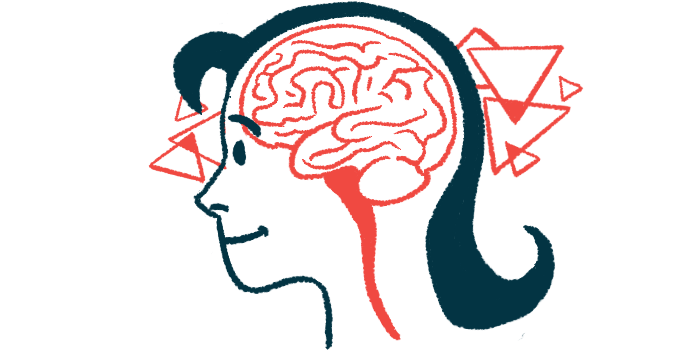Seeking the best of gene therapy delivery methods to treat disease
Delivery direct to nervous system, like with Upsaza, shows benefits: Study
Written by |

Direct delivery of gene therapies into the central nervous system (CNS) — an approach used by Upstaza (eladocagene exuparvovec), a gene therapy now under review in the U.S. as a treatment for aromatic l-amino acid decarboxylase (AADC) deficiency — may have advantages over gene therapies given into the bloodstream for treating neurological disorders.
That’s according to a new review study, from a team of University of Massachusetts researchers who sought to determine which may be the best of the gene therapy delivery methods available for treating diseases affecting the nervous system.
Specifically, the study noted, the CNS — comprised of the brain and spinal cord — may be protected from certain immune reactions that compromise gene therapy efficacy. Still, brain delivery has risks, and more work is needed to fully understand the effects of CNS-delivered gene therapy on immune function in the brain, per the researchers.
“The unique environment of the CNS provides some hurdles and some benefits, but it remains an important target for … therapeutic delivery,” the team wrote.
Their study, “Immune responses to central nervous system directed adeno-associated virus gene therapy: Does direct CNS delivery make a difference?” was published in the journal Neurotherapeutics.
Gene therapy delivery methods may be linked to immune reactions
Gene therapies, which introduce genetic material to the body as a way of treating disease, are commonly packaged into viral carriers. These carriers do not cause disease and help the therapies to be taken up by human cells. Adeno-associated viruses, or AAVs, are often used for this purpose.
Upstaza, which has been approved in the European Union and the U.K., delivers to patient cells a healthy copy of the DDC gene — mutations in which are the cause of AADC deficiency. The gene is packaged into a viral carrier called AAV2 and injected directly into the brain via a surgical procedure.
A regulatory decision on the gene therapy in the U.S. is expected by Nov. 13.
A possible risk of AAV-based gene therapies is that the recipient will have an immune reaction against the virus that limits how effective and safe the treatment will be. Evidence suggests that the methods of gene therapy delivery used by such treatments might influence these immune reactions.
“With an increasing number of studies using AAV, especially for CNS targets, it is essential that we better understand the immune response to this vector and the role it plays in both safety and therapeutic outcomes,” the researchers wrote.
To that end, the team conducted a review of current knowledge related to immune response against AAV. In particular, the researchers focused on different methods of gene therapy delivery for brain diseases.
With an increasing number of studies using AAV [adeno-associated viruses], especially for CNS [central nervous system] targets, it is essential that we better understand the immune response to this vector and the role it plays in both safety and therapeutic outcomes.
Because AAV viruses naturally occur in the environment, individuals may have existing virus-neutralizing antibodies in their body from previous exposures that could make treatment less effective. Patients can also develop such antibodies after being dosed.
It’s common for approved gene therapies to require that a person be tested for AAV antibodies before treatment, and often, their presence renders a person ineligible for the therapy. In clinical trials of Upstaza, patients with high levels of anti-AAV2 antibodies were excluded.
Direct delivery to the brain could bypass adverse immune responses
With gene therapy, CNS delivery can be done by direct injection into brain tissue, known as intraparenchymal, or by injection into the cerebrospinal fluid that circulates in the CNS. According to the researchers, CNS delivery might lead to a lower risk of immune responses that compromise treatment efficacy compared with treatments given intravenously, or infused into the bloodstream.
That’s likely because the CNS is well protected against invaders from the rest of the body. Immune components circulating in the blood, including neutralizing antibodies and inflammatory immune cells, have restricted entry into the brain.
Indeed, clinical trial evidence suggests that even when mild immune responses are observed, they generally don’t interfere with the therapeutic efficacy of intraparenchymal therapies such as Upstaza, even if patients are not pretreated with immune-suppressing medications.
Ultimately, that could mean that patients with pre-existing antibodies don’t necessarily need to be excluded from treatment.
“Thus, a unique advantage to delivering into the parenchyma is the ability to circumvent pre-existing immunity and treat a larger patient pool,” the researchers wrote.
Other advantages include the ability to achieve higher brain penetrance of the therapy at a lower dose, thus hopefully avoiding systemic side effects to other organs that are possible when treatment is infused into the bloodstream.
Despite these benefits, brain delivery is a riskier approach than systemic delivery because brain tissue could be damaged, although evidence has generally found it safe.
The researchers also emphasized that more research is needed to better understand the use of CNS-directed gene therapies and the immune responses they elicit, especially as it relates to certain populations of understudied brain-resident immune cells.
“There [are] still a considerable number of unknowns about how the immune system recognizes and responds to AAV gene therapies targeted to the CNS,” the researchers wrote, noting the need for the development of new minimally invasive ways of monitoring immune response in the brain.






